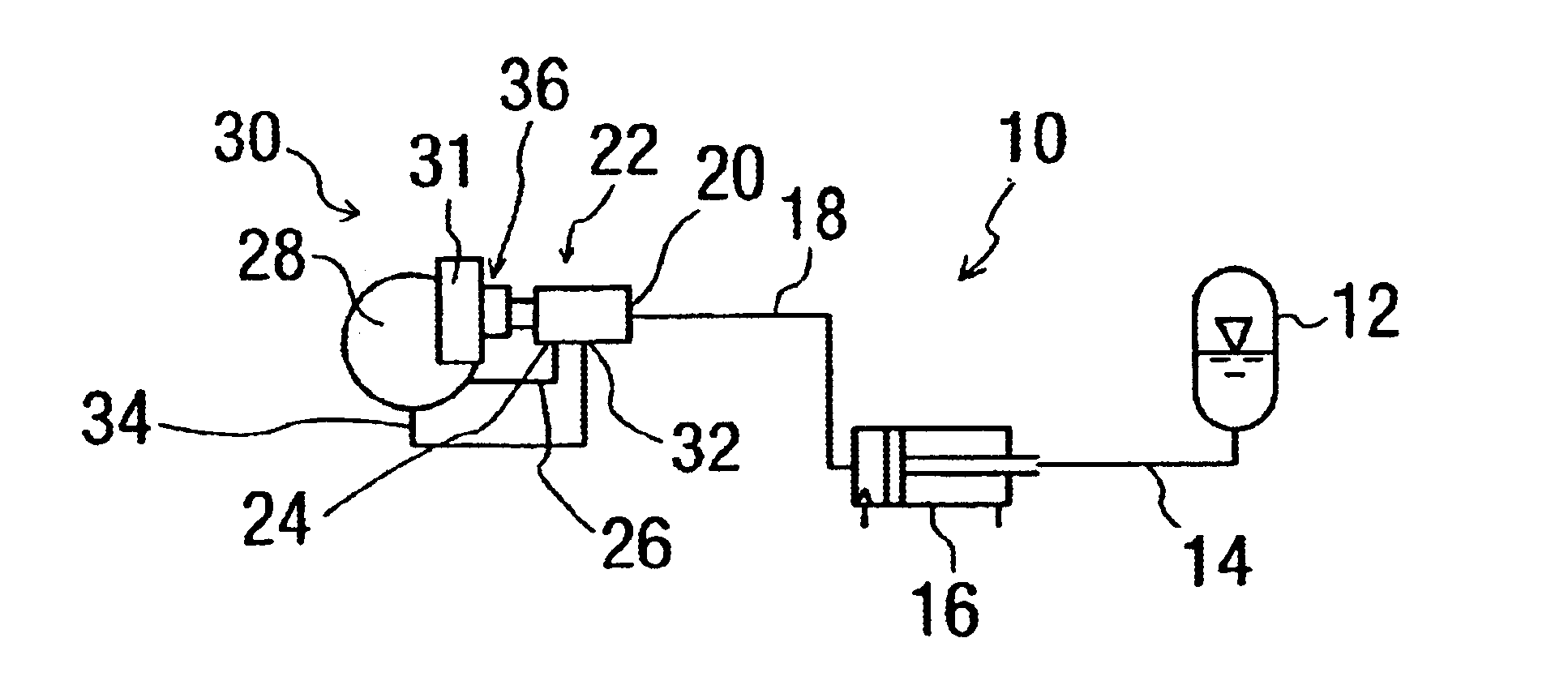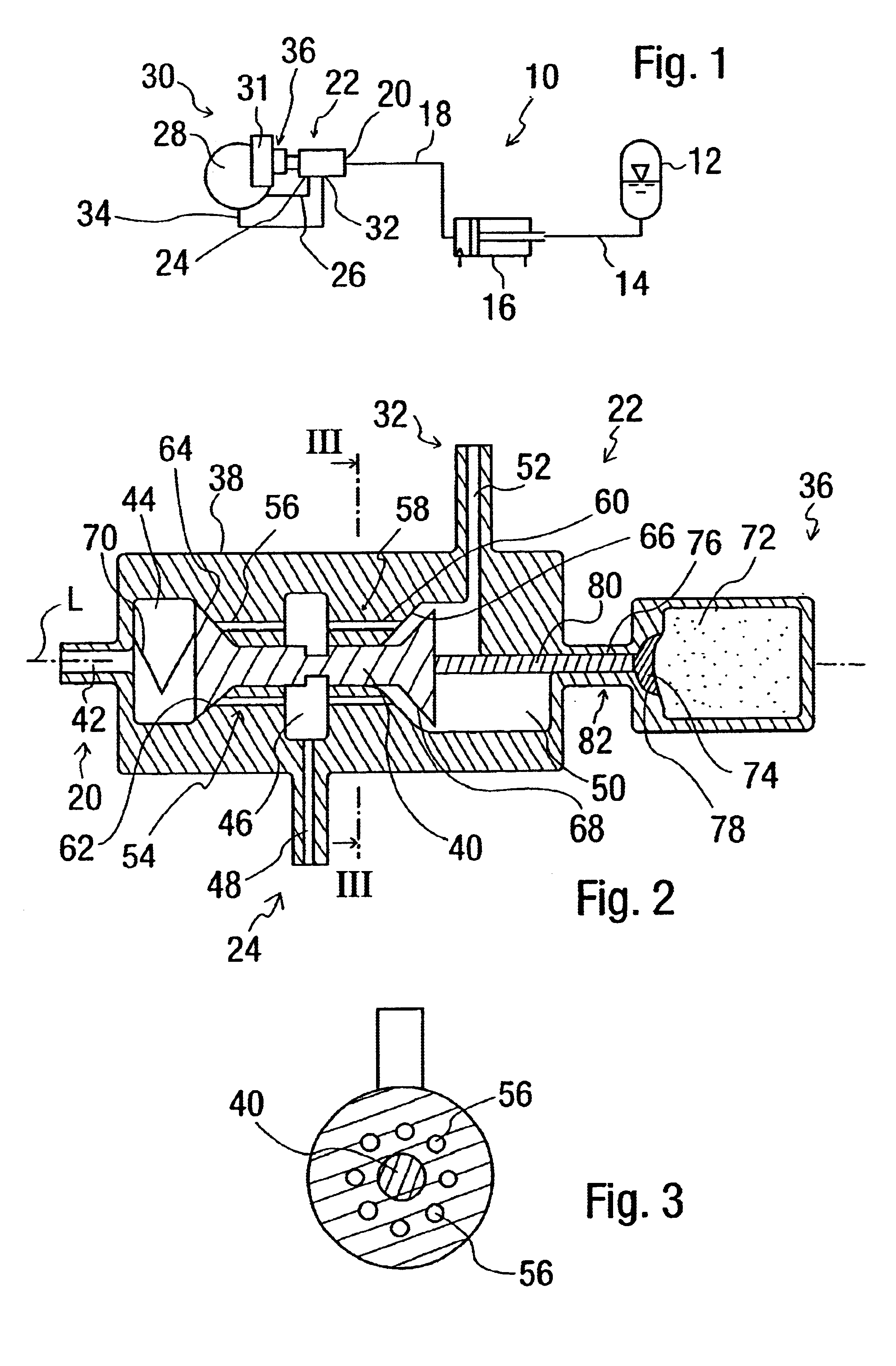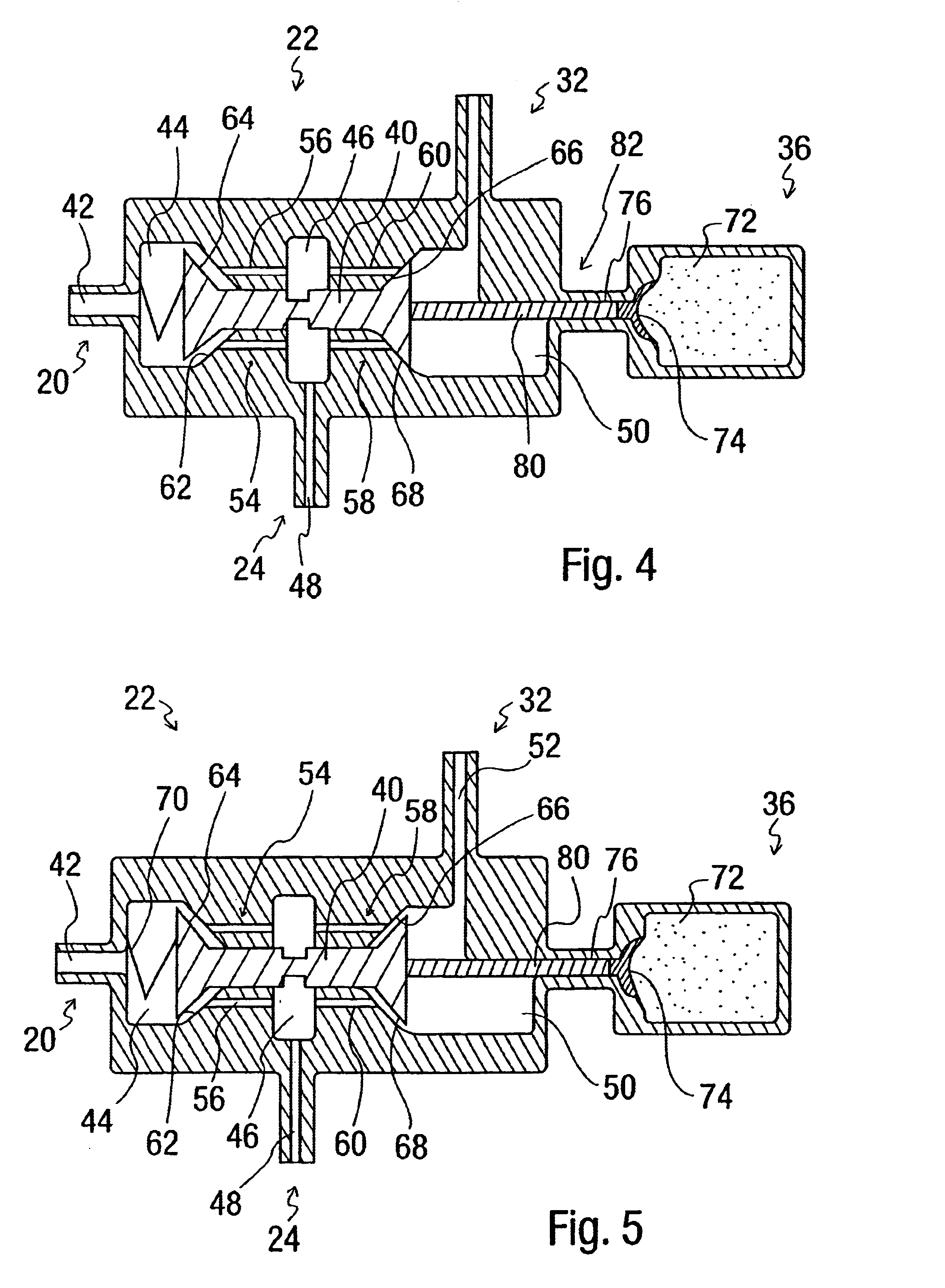Temperature-controlled fuel valve, especially for a fuel-operated heating burner of a vehicle heating system
- Summary
- Abstract
- Description
- Claims
- Application Information
AI Technical Summary
Benefits of technology
Problems solved by technology
Method used
Image
Examples
Embodiment Construction
[0024]Referring to the drawings in particular, a heating system according to the present invention is designated in general by 10 in FIG. 1. A fuel line 14 leads from a fuel tank 12 to a metering pump 16, which may be of the conventional design. Another fuel line 18 leads from the metering pump 16 to a feed area 20 of a temperature-controlled fuel valve 22. The fuel introduced under increased pressure into the fuel valve 22 via the line 18 can be introduced via a first drain area 24 and another fuel line 26 into a combustion chamber 28 of a heating burner 30 in an area that is located close to a glow-type ignition pin or another igniting member 31. Furthermore, fuel can be introduced via a second drain area 32 and another line 34 from the fuel valve 22 into an area of the combustion chamber 28 that is located farther away from the glow-type ignition pin 31. It shall be pointed out here that the heating burner 30 may be an atomization burner or a vaporizing burner. The fuel is releas...
PUM
 Login to View More
Login to View More Abstract
Description
Claims
Application Information
 Login to View More
Login to View More - R&D
- Intellectual Property
- Life Sciences
- Materials
- Tech Scout
- Unparalleled Data Quality
- Higher Quality Content
- 60% Fewer Hallucinations
Browse by: Latest US Patents, China's latest patents, Technical Efficacy Thesaurus, Application Domain, Technology Topic, Popular Technical Reports.
© 2025 PatSnap. All rights reserved.Legal|Privacy policy|Modern Slavery Act Transparency Statement|Sitemap|About US| Contact US: help@patsnap.com



